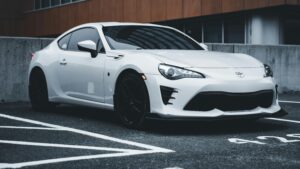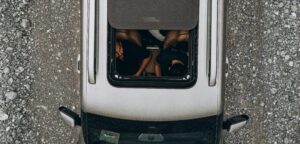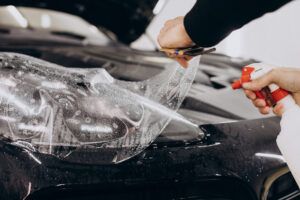Salt Lake City residents know the struggle all too well. One day you’re basking in sunshine that feels like it could melt asphalt, and the next you’re scraping ice off your windshield while dodging road salt trucks. Your vehicle takes the brunt of this meteorological madness, and traditional protection methods simply aren’t cutting it anymore.
Understanding the Utah Elements That Destroy Your Paint
The Wasatch Front creates a unique microclimate that’s particularly harsh on automotive finishes. During summer months, UV radiation at our elevation is approximately 25% more intense than at sea level. This increased exposure breaks down clear coat at an accelerated rate, causing that dreaded chalky appearance and color fade.
Winter brings its own set of challenges. The combination of magnesium chloride and calcium chloride used on Utah roads doesn’t just melt ice – it actively corrodes metal and degrades paint protection. Add in the freeze-thaw cycles that can occur multiple times in a single day, and you’ve got a recipe for paint destruction.
But here’s where understanding the science becomes your asset rather than your enemy.
The Molecular Magic of Ceramic Coating
At its core, ceramic coating is liquid polymer technology that creates a semi-permanent bond with your vehicle’s paint. Think of it as giving your car a suit of invisible armor that operates at the molecular level.
The primary component in professional-grade ceramic coatings is Silicon Dioxide (SiO2), sometimes combined with Titanium Dioxide (TiO2). When applied correctly during a ceramic coating application SLC service, these compounds create a crystalline structure that’s measured in nanometers – roughly 100 times thinner than human hair, yet remarkably durable.
This nano-technology fills in the microscopic peaks and valleys in your paint, creating a perfectly smooth surface. Water beads up and rolls off because there’s literally nowhere for it to grab onto. It’s the same principle that keeps water from sticking to a lotus leaf, nature’s own hydrophobic surface.
Why Paint Correction Comes First
Here’s where many car owners make their first mistake. They rush to apply ceramic coating without properly preparing the surface. It’s like putting expensive wallpaper over a damaged wall – you’re just preserving problems.
Paint correction is the systematic removal of surface imperfections through mechanical polishing. Swirl marks, water spots, oxidation, and micro-scratches all need to be addressed before any coating application. The process typically involves:
Multiple stages of polishing compounds, starting with more aggressive cuts and finishing with ultra-fine polishes. Each stage removes a microscopic layer of clear coat, eliminating defects while maintaining maximum paint thickness.
Professional detailers use paint depth gauges to ensure they’re not removing too much material. Your factory clear coat is typically only 1.5-2 mils thick (about the thickness of a plastic grocery bag), so precision matters.
The end result? A surface that’s not just clean, but optically perfect. This mirror-like finish is what allows ceramic coating to bond properly and perform at its peak.
The Chemical Reaction That Protects
When ceramic coating cures, it undergoes a fascinating transformation. The solvents evaporate, leaving behind the SiO2 molecules which then cross-link to form a rigid, three-dimensional matrix. This process, called polymerization, typically takes 24-48 hours for initial cure and up to 30 days for full hardness.
The resulting surface has several remarkable properties:
Hardness ratings of 9H on the pencil scale (just below diamond) mean that minor scratches and swirl marks simply can’t penetrate the coating. The surface tension is so low that contaminants struggle to adhere. Even bird droppings and tree sap, which normally etch into paint within hours, can be removed easily if addressed within a reasonable timeframe.
Salt Lake City’s Specific Challenges
Our location presents unique considerations for ceramic coating performance. The high altitude means more intense UV exposure, requiring coatings with enhanced UV inhibitors. The dramatic temperature swings – sometimes 40 degrees in a single day – demand superior flexibility to prevent cracking or delamination.
Local data from the National Weather Service shows we average 222 sunny days per year, each one bombarding your vehicle with radiation that breaks down traditional waxes and sealants within weeks.
Road treatment chemicals pose another challenge. Utah’s Department of Transportation uses a proprietary blend of deicers that’s particularly aggressive. Standard waxes and sealants dissolve quickly when exposed to these chemicals, but ceramic coatings resist chemical penetration at the molecular level.
Application Process for Maximum Protection
The success of any ceramic coating depends heavily on proper application. Professional installation typically follows this protocol:
Decontamination begins with a thorough wash using pH-neutral soaps. Iron particles embedded in the paint are dissolved with specialized chemicals that turn purple on contact. Clay bar treatment removes bonded contaminants that washing can’t touch.
Paint correction follows, with multiple polishing stages tailored to each vehicle’s specific needs. Some cars might need heavy correction for years of neglect, while newer vehicles might only require light polishing.
The coating application itself requires controlled conditions. Temperature and humidity must be within specific ranges – typically 50-80°F with less than 50% humidity. In Salt Lake City’s dry climate, humidity is rarely an issue, but temperature control in professional shops becomes critical.
Technicians apply the coating in small sections, allowing each to flash (partially cure) before removal. This ensures even coverage and prevents high spots that could require aggressive polishing to remove.
Long-Term Performance in Utah Conditions
Real-world testing in our climate shows dramatic differences in protection levels. Vehicles with professional ceramic coating maintain their appearance significantly longer than those with traditional protection.
A study by the International Detailing Association found that ceramic-coated vehicles in high-UV, high-altitude environments showed 73% less clear coat degradation over three years compared to untreated vehicles.
For Salt Lake City specifically, this translates to:
Protection from summer heat that regularly exceeds 100°F on asphalt surfaces. Resistance to winter road chemicals that would normally cause paint failure within 2-3 seasons. Easier snow and ice removal, as the hydrophobic properties prevent strong adhesion.
Maintenance for Maximum Lifespan
While ceramic coatings are often marketed as “maintenance-free,” smart owners know better. Proper care extends the coating’s lifespan and maintains its protective properties.
Regular washing with pH-neutral products prevents contamination buildup. Avoid automatic car washes with harsh chemicals and spinning brushes that can mar the coating. Instead, adopt the two-bucket hand wash method or use touchless washing systems.
Every 3-4 months, apply a ceramic coating booster or maintenance spray for ceramic coating. These products refresh the hydrophobic properties and add an extra sacrificial layer of protection.
Annual inspections by professionals can identify any areas needing attention before they become problems. Small chips or scratches can be spot-treated to maintain the coating’s integrity.
Cost Versus Value Analysis
The initial investment in paint correction and ceramic coating might seem substantial – typically ranging from $800 to $3,000 depending on vehicle size and condition. But consider the alternatives.
Traditional waxing every three months costs about $100 per application, totaling $400 annually. Over five years, that’s $2,000 in maintenance alone, without the superior protection ceramic coating provides. Factor in the reduced need for paint correction, the maintained resale value, and the time saved on maintenance, and the economics become clear.
Think of it as the difference between renting and owning. You can keep paying for temporary protection, or invest once in a long-term solution that actually appreciates your vehicle’s value.
Making the Right Choice for Your Vehicle
Not all ceramic coatings are created equal. Professional-grade products contain higher concentrations of active ingredients and require specific application techniques. While DIY options exist, the risk of improper application in Salt Lake City’s challenging climate often outweighs the savings.
Research your installer thoroughly. Look for certifications from coating manufacturers, proper facility climate control, and a solid warranty program. The best installers will educate you on the process and set realistic expectations for performance and maintenance.
Understanding the science behind these protective technologies empowers you to make informed decisions. Your vehicle faces a daily assault from Utah’s extreme weather. Armed with the right protection and knowledge, you can keep it looking showroom fresh for years to come.
FAQs About Ceramic Coating in Salt Lake City
How long does ceramic coating last in Utah’s extreme weather conditions?
Professional-grade ceramic coatings typically last 3-5 years in Salt Lake City’s climate when properly maintained. The intense UV exposure and winter road chemicals can reduce lifespan compared to milder climates, but the protection far exceeds traditional methods.
Can ceramic coating be applied in winter months in SLC?
Yes, but it requires a climate-controlled facility. Professional shops maintain optimal temperature and humidity levels year-round. Mobile detailers may be limited to warmer months unless they have specialized equipment.
Does ceramic coating prevent rock chips on canyon roads?
While ceramic coating adds hardness to the paint surface, it’s not thick enough to prevent impact damage from rocks. For maximum protection on routes like Big or Little Cottonwood Canyon, consider combining ceramic coating with paint protection film on high-impact areas.
How does Salt Lake’s altitude affect ceramic coating curing time?
The low humidity at elevation can actually speed up initial curing, but full cure time remains standard at 24-48 hours. The key is maintaining consistent temperature during application and initial cure period.
Is ceramic coating worth it for cars parked outside near the Great Salt Lake?
Absolutely. The salt air near the lake accelerates corrosion and paint degradation. Ceramic coating provides a barrier against salt deposits and makes cleaning easier, essential for vehicles in areas like Syracuse or Antelope Island vicinity.



